The Science of Organic Makeup: How Ingredients Like Aloe Vera and Jojoba Oil Benefit Your Skin
flareAI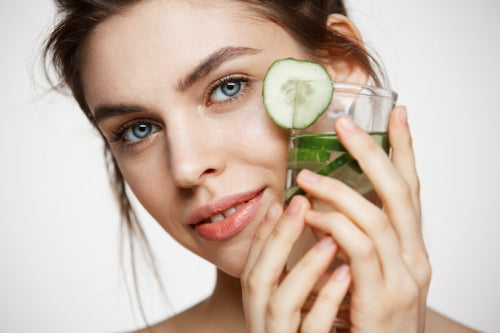
Quick Listen:
Imagine swiping on a bold red lipstick that not only commands attention but also quenches your lip's thirst, or blending a foundation that evens out imperfections while quietly mending the subtle signs of stress etched into your skin. This isn't the stuff of wishful thinking it's the tangible promise of organic makeup, where time-tested botanicals like aloe vera and jojoba oil elevate cosmetics from mere adornments to active allies in skin health. As we stand on the cusp of a beauty era defined by intention over illusion, these ingredients are redefining what it means to get ready. Join us as we dissect the rigorous science, undeniable trends, and real-world ripple effects propelling this shift forward.
Many women feel trapped by makeup that hides flaws but risks irritation and hidden toxins. This daily choice weighs heavily, dimming confidence over time. Liht Organics invites you to embrace beauty differently. With up to 90% USDA-certified organic ingredients, our vegan, cruelty-free products deliver vibrant color and gentle care, letting you glow with confidence, knowing your skin is nurtured, not compromised. Shop Now!
The Science of Organic Makeup: How Aloe Vera and Jojoba Oil Revolutionize Skin Health
Delve into the transformative power of natural elements in organic formulations, where aloe vera and jojoba oil deliver sustained hydration, repair, and protection benefits that extend far beyond the mirror's reflection.
Defining Organic Makeup in Today's Landscape
Organic makeup represents more than a label; it's a rigorously vetted commitment to purity and performance, born from a seismic pivot in consumer priorities that traces back to the clean beauty insurgency of the early 2010s. What began as whispers in boutique apothecaries and viral social media hauls has swelled into a dominant force, with certified products free from synthetic pesticides, GMOs, and harsh chemicals now anchoring shelves from high-end department stores to direct-to-consumer platforms. These formulations prioritize bioavailability: ingredients that your skin doesn't just tolerate but actively absorbs, fostering resilience amid daily assaults from pollution, screens, and sun.
Central to this paradigm are aloe vera and jojoba oil, unassuming yet potent extracts that straddle the line between luxury and laboratory precision. Aloe vera's gel, derived from the leaves of the Aloe barbadensis plant, comprises nearly 99 percent water infused with bioactive compounds that lock in hydration and fortify cellular repair. Jojoba oil, technically a wax ester extracted from the seeds of Simmondsia chinensis, eerily parallels the composition of human sebum, enabling seamless integration without clogging or overwhelming. Pioneering brands like Liht Organics harness these in their high-performance lineup boasting over 80 percent clean, organic ingredients, manufactured in the USA and Singapore for makeup that's not only edible-safe but profoundly nurturing. Yet, to grasp their ascendancy, consider the market forces and cultural currents accelerating this botanical boom.
Navigating the Surge in Organic Beauty Trends
The Unyielding Pull of Consumer Consciousness
Hard data underscores the fervor: The global natural and organic cosmetics market, which clocked in at USD 41.65 billion in 2024, is on track to triple to USD 103.23 billion by 2034, propelled by a steady 9.50 percent compound annual growth rate from 2025 through the decade. This expansion stems from heightened buyer awareness, with discerning shoppers prioritizing safe, eco-friendly, and sustainable alternatives that align with holistic wellness. North America leads the charge, its sector reaching USD 19.16 billion in 2024 alone, capturing nearly 46 percent of the global share and reflecting a mature appetite for transparency in an industry long shadowed by synthetic excess.
In the United States specifically, the natural and organic cosmetics segment stood at USD 14.37 billion in 2024 and is forecasted to hit USD 36 billion by 2034, mirroring broader North American momentum. This isn't mere hype; it's a post-pandemic recalibration, where consumers emboldened by health scares and environmental reckonings eschew endocrine disruptors like parabens and phthalates in favor of vegan, cruelty-free staples. Platforms like Instagram and TikTok amplify this, with user-generated content on "skinimalism" and multifunctional tints amassing billions of impressions. The result? A renaissance in products that perform: breathable bases enduring humid Malaysian afternoons or arid Saudi evenings, blushes evoking a post-hike flush without the fade.
Prioritizing Transparency and Planetary Stewardship
In this transparent age, ingredient lists are scrutinized like manifestos. Forward-thinking labels, including Liht Organics, furnish exhaustive disclosures sourcing maps, efficacy assays, and allergen flags to dismantle barriers like product misunderstanding and trust gaps that have long plagued newcomers. This candor extends to eco-innovations: biodegradable packaging, regenerative sourcing, and low-carbon logistics that minimize the carbon trail from Singapore factories to UAE boutiques.
The resonance is global, tailored to regional nuances. In sun-drenched Australia and India, where heritage botanicals like aloe echo ancient Ayurvedic and Aboriginal rites, modern organics fuse tradition with tech for inclusive appeal. Singapore and Malaysia's urbanites, navigating fast-paced lives, gravitate toward multi-taskers stocked at locales like The Green Collective or Namshi. Even in the US and Saudi Arabia, once bastions of conventional glamour, the tide turns toward ethical elegance, with outposts like Gold Apple and Faces bridging luxury and locality.
Unpacking the Empirical Foundations of Key Ingredients
Aloe Vera: A Beacon of Hydration and Renewal
From ancient Egyptian elixirs to contemporary cosmeceuticals, aloe vera's legacy is etched in efficacy. Its gel teems with polysaccharides that act as humectants, drawing ambient moisture into the skin's strata to plump and fortify against desiccation. Complementing this, enzymes such as bradykinase temper inflammatory cascades, mitigating responses to irritants or solar aggression, while acemannan spurs fibroblast proliferation for amplified collagen synthesis curbing wrinkles and enhancing suppleness.
Clinical validation abounds: A 2020 double-blind, randomized controlled trial demonstrated that 40 micrograms of aloe sterol daily bolstered skin barrier integrity and moisture retention, hallmarks of anti-aging prowess. Another investigation affirmed its prowess in whitening, antioxidant defense, and UV shielding, positioning it as a multifaceted guardian. Translated to makeup, this yields primers that soothe sans sensitization and stains that mend fissures on contact ideal for sensitive cohorts in diverse climes, from Australia's outback to India's monsoons.
Jojoba Oil: Mastering Equilibrium and Defense
Defying its nomenclature, jojoba oil is a wax ester, its molecular profile a near-twin to sebum, granting it unparalleled affinity for cutaneous absorption. This congruence regulates lipid output curbing excess in oily terrains while replenishing parched ones without comedogenic fallout. Its anti-inflammatory credentials shine through inhibition of pro-inflammatory mediators, alleviating erythema in acne or eczematous flares.
Empirical reviews corroborate: Topical jojoba fortifies the epidermal barrier, curtailing transepidermal water loss and fostering repair in compromised skins. A 2018 analysis highlighted its synergy with topicals, amplifying penetration for amplified luminosity and lesion abatement. In formulations, it excels in non-occlusive concealers, permitting respiration beneath coverage a boon for psoriasis patients or those in Singapore's swelter.
From Lab to Life: Tangible Implementations
Spotlight on Liht Organics: Innovation Incarnate
Liht Organics distills this expertise into accessible artistry, their spectrum from vivacious glosses to luminous liquids infused with organic actives that transcend aesthetics. Anecdotes abound: A user in Malaysia extolled a jojoba-laced veil for tonal harmony sans midday sheen, while UAE devotees hailed aloe-enriched hues for irritation-free endurance. These narratives counter objections head-on, with Liht's granular ingredient dossiers percentages, origins, assays cultivating credibility in a skeptical sphere. Over 80 percent organics ensure benevolence, transforming routines into rituals that honor skin's lexicon.
In feedback forums on Instagram and TikTok, acclaim echoes: Post-application vitality in Saudi's heat or India's humidity, sans the dread of undisclosed synthetics. It's empirical endorsement that performance and purity coexist, empowering global adherents.
A Worldwide Embrace: Broader Industry Echoes
This momentum cascades across competitors, etching organics into the mainstream. RMS Beauty's Un Cover-Up marries jojoba's emollience with coconut's silk for a hydrating veil that conceals judiciously. Well People's Supernatural Stick Blush weaves aloe's quench with jojoba's poise for a verdant flush. Ilia and Kosas, too, embed these in serums and shields, from aloe-driven foundations to jojoba-fortified correctors, heralding organic's maturation. Asia-Pacific, with its 9.5 percent CAGR mirroring global strides, accelerates this tapestry from Australian indies to Indian e-marts.
Confronting Hurdles in the Organic Odyssey
The Delicate Dance of Sourcing and Sustainability
Bounty begets burdens: Aloe's arid origins risk depletion in drought-prone realms, demanding vigilant, fair-trade harvests. Jojoba's resilience notwithstanding, surging appetites test arid supply veins. Brands tread nimbly vetting partners, investing in agroforestry to sustain yields without eroding ethics or escalating costs. Regenerative paradigms, enriching soils while harvesting, illuminate paths forward, ensuring tomorrow's greens today.
Navigating Sensitivities and Universality
Universality demands discernment: Aloe's rarity for allergies warrants preemptive patches; jojoba's richness may tip oily balances if unchecked. Crafting for spectra from adolescent acne to elder elasticity exacts artistry, blending tolerances with tolerances. Illuminating labels myths busted, synergies spotlighted arm consumers, dissolving fog around compositions and forging faith.
Horizons and Horizons: Economic and Innovative Vistas
Capitalizing on the Organic Ascendancy
Prospects gleam: The U.S. trajectory to USD 36 billion by 2034 underscores organic's fiscal fortitude, with Liht Organics primed via unyielding purity pledges that spawn allegiance. In burgeoning bastions like Malaysia and India, burgeoning eco-sentience heralds alliances think Namshi integrations or Faces exclusives democratizing access.
Forging Frontiers in Formulation
Envision adaptive amalgams: Aloe-jojoba matrices in responsive casings, morphing to dermal dictates. Fidelity to facts curtails churn, galvanizing guilds. For enterprises, it's alchemy: Nature's palette yields prosperity, one verdant stroke at a time.
The Verdant Vanguard: Envisioning Tomorrow
Clinicians concur: "Aloe and jojoba transcend fads, anchoring dermal vitality," posits a vanguard in cosmeceutical discourse. Horizons herald fusions wedding endurance to empathy, sustainability seamless from root to render.
As you curate your cache, interrogate: Does it merely mantle, or mend? Seek seals, scrutinize scrolls, embrace authenticity's pulse. For stewards of style, the clarion rings: Urgency abounds, verdant and vital. In beauty's blooming epoch, true radiance roots in reciprocity what flourishes with you, endures.
Frequently Asked Questions
What makes aloe vera and jojoba oil so effective in organic makeup formulations?
Aloe vera contains polysaccharides that act as natural humectants, drawing moisture into the skin while enzymes like bradykinase reduce inflammation and acemannan stimulates collagen synthesis. Jojoba oil, technically a wax ester, closely mimics human sebum's molecular structure, allowing seamless absorption without clogging pores while regulating oil production and strengthening the skin barrier.
How fast is the organic makeup market growing and why are consumers switching to natural cosmetics?
The global natural and organic cosmetics market is experiencing explosive growth, expanding from $41.65 billion in 2024 to a projected $103.23 billion by 2034 at a 9.50% annual growth rate. This surge is driven by post-pandemic health consciousness, consumer demand for transparency in ingredients, and the desire to avoid synthetic chemicals like parabens and phthalates that can disrupt hormones.
Are organic makeup products suitable for all skin types, including sensitive and acne-prone skin?
Yes, organic makeup with ingredients like aloe vera and jojoba oil is particularly beneficial for various skin types. Jojoba oil's sebum-like composition helps regulate oil production in both oily and dry skin without causing breakouts, while aloe vera's anti-inflammatory properties soothe sensitive skin and reduce irritation. However, it's recommended to patch test products first, as individual sensitivities can vary even with natural ingredients.
Disclaimer: The above helpful resources content contains personal opinions and experiences. The information provided is for general knowledge and does not constitute professional advice.
You may also be interested in: [FEATURE] THE FEMALE CULTURE – I TRIED LIHT ORGANICS
Many women feel trapped by makeup that hides flaws but risks irritation and hidden toxins. This daily choice weighs heavily, dimming confidence over time. Liht Organics invites you to embrace beauty differently. With up to 90% USDA-certified organic ingredients, our vegan, cruelty-free products deliver vibrant color and gentle care, letting you glow with confidence, knowing your skin is nurtured, not compromised. Shop Now!
Powered by flareAI.co
شاركي
You May Also Like
-

Discovering Self-Love Through Clean Beauty: A Guide to Nurturing Your Inner and Outer Self
In the journey of self-love, every action, thought, and choice we make towards ourselves can be a powerful affirmatio...
-

The Science Behind Organic Makeup and Pregnancy: A Gentle Choice for Moms-to-Be
wp:paragraph Pregnancy is a wonderful and exciting journey that comes with added responsibilities of ensuring the ...
-
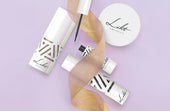
Liht Organics Black Friday: Enhance Your Beauty Routine with Vegan, Organic, and Natural Essentials!
As the holiday season approaches, there’s a sparkle in the air, and we at Liht Organics are thrilled to add a touch o...
-

Organic Makeup That Heals As It Conceals
Liht Organics Empowers Women With Only The Best For Their Beauty NeedsLiht Organics combines the best of both worlds:...
-
![[FEATURE] Liht Organics to debut at TFWA Asia Pacific show](//lihtorganics.com/cdn/shop/articles/1_1.png?v=1759328400&width=170)
[FEATURE] Liht Organics to debut at TFWA Asia Pacific show
‘Organic makeup that’s safe enough to eat’ — Liht Organics to debut at TFWA Asia Pacific show by Hannah Tan | 24 Apri...
-
![[FEATURE] The Singapore-based organic makeup brand is a first-time exhibitor at this year’s TFWA Asia Pacific Exhibition in Singapore in May 2025](//lihtorganics.com/cdn/shop/articles/2_1.png?v=1759328386&width=170)
[FEATURE] The Singapore-based organic makeup brand is a first-time exhibitor at this year’s TFWA Asia Pacific Exhibition in Singapore in May 2025
TFWA Asia Pacific preview: Liht Organics targets expansion in travel retail By DFNI Staff Writer The Singapore-bas...
-
![[FEATURE] Travel Retail Awards 2025 finalists - Best Make-up Product Color-Intense Liquid Lipstick – Liht Organics](//lihtorganics.com/cdn/shop/articles/4_e2f54f0f-fcd1-46e7-9990-fc9d29e35131.png?v=1759328382&width=170)
[FEATURE] Travel Retail Awards 2025 finalists - Best Make-up Product Color-Intense Liquid Lipstick – Liht Organics
Revealed: Travel Retail Awards 2025 finalists By Trbusiness Editor | Wednesday, 23 July 2025 15:21 TRBusiness is th...
-
![[FEATURE] Liht Organics targets expansion in travel retail](//lihtorganics.com/cdn/shop/articles/3_1.png?v=1759328346&width=170)
[FEATURE] Liht Organics targets expansion in travel retail
Organic makeup that’s safe enough to eat: Liht Organics targets expansion in travel retail By Laura Shirk Liht Organ...
-

[FEATURE] Gulf News: TikTok’s strawberry girl makeup trend: How to achieve that rosy glow inspired by Hailey Bieber
Berry, berry, strawberry, love strawberry, like BTS’s J-Hope, the band’s strawberry enthusiast once said. If only we ...
-

[FEATURE] Gulf Business Magazine : Liht-ing it up
Our founder, Nerissa Low was interviewed by Gulf Business, where she discussed her experience launching Liht, an orga...
-

[FEATURE] Daily Vanity: 11 local beauty brands owned by women – you’d be surprised how many of them started in their kitchens!
When we give a shout-out to homegrown beauty businesses, we aren’t just doing it for the sake of supporting local. Th...
-

[FEATURE] Entrepreneur ME : UAE-Based Liht Organics' Nerissa Low On Crafting An Organic Makeup Brand For The Skin-Conscious Consumer
As is the case with the origin stories of so many startups out there, Liht Organics came into being after its founder...
-

Mother, Baby & Child Editor’s Pick: Liht Organics Lights the Way
Excited to be the Mother, Baby & Child’s ‘Editors pick’ for their choice of Beauty brand.The article outlined the...
-

[FEATURE] EmiratesWoman - 8 Fabulous things to do in Dubai this weekend
by SARAH JOSEPHJANUARY 20, 2023Try the UAE’s first virtual reality makeup podium The popular VR-backed makeup exper...
-

Nerissa Low of Liht Organics On The Self-Care Routines & Practices Of Busy Entrepreneurs and Business Leaders
By Maria Angelova, CEO of Rebellious Intl.Date: 4 January, 2023Nerissa Low of Liht Organics On The Self-Care Routines...
-

Liht Organics: Meet the beauty brand that has caught the eye of the Royal Family of Bahrain
By Crystal Lee Digital Editor28 May 2021The world of clean beauty is, ironically, rather murky.That’s because the ter...
-

The latest luxury makeup and skincare drops, including serums, concealers, moisturisers and more
Allisa Noraini21 May, 2021It’s fine to splurge in the name of beauty. This new range of makeup and skincare drops are...
-

These SG Beauty Bosses Are Conquering The World Despite The Pandemic
First Singapore, then the US, China, Germany, Dubai, UK, South Korea, Malaysia, Hong Kong, Thailand, Australia… By...
-

Nerissa Low, Founder at Liht Organics
Written by Callum LaingPosted on December 26, 2020 10 min readNerissa Created Organic Makeup That Actually Improve...
-

Liht Organics – Makeup That Makes You
At Liht Organics, our mission is simple – to provide women (and men) with a safe experience when it comes to beauty s...
-

Why Should We Use Organic Makeup?
We cannot deny that cosmetics is one of our beauty essential item – it enhances our looks and conceals our flaws. Man...
-

Organic makeup and why your skin will love it: Liht Organics founder
By Jolene,July 27, 2020 |7 mins readOrganic make up in Singapore is a trend that is fast-catching on here as we becom...
-

[FEATURE] DC EDIT – Makeup & Confidence: Talking Self-love With Liht Organics’ Founder Nerissa Low
Makeup and confidence — the long, drawn-out fight that many of us have grappled with personally. I’m sure I’m not the...
-

[FEATURE] THE FEMALE CULTURE – I TRIED LIHT ORGANICS AND THIS IS HOW IT WENT
I’m a huge fan of makeup and I love testing out new products so I was pretty excited to get my hands on Liht Organics...
-

[FEATURE] SINGAPORE MOTHERHOOD – The Best Organic and Natural Skincare and Makeup for Pregnant and Breastfeeding Mums in Singapore
Pregnancy is a hormone-volatile period for women. One place where this makes itself seen and felt is on the skin. Som...
-

[FEATURE] AFTER CLINIC HOURS – 21 Back to Beauty Deals in Singapore (2020)
With spas and salons shuttered island wide for two months, I never thought I’d be this desperate for a good old’ Swed...
-

[FEATURE] KUL AL USRA MAGAZINE JUNE 2020
Choosing Pinks & Oranges this summer!Featured: Moisture Burst Lip Glaze in Pink Cupcake.
-
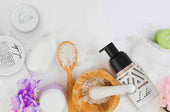
[FEATURE] Award-winning Organic Makeup Brand Liht Organics Gives Back to the Community & Environment During COVID-19
Singapore’s First Organic Makeup Brand with 100% Natural Makeup That Is Safe Enough to Eat Liht Organics promises org...
-

[FEATURE] COSMETICS DESIGN ASIA – COVID-19 ‘WAKE-UP CALL’: SINGAPORE’S LIHT ORGANICS SEES GLOBAL POTENTIAL AMID CLEAN BEAUTY CLAMOUR
Original article at: https://www.cosmeticsdesign-asia.com/Article/2020/06/26/Singapore-s-Liht-Organics-sees-globa...
-

[FEATURE] THE LIFESTYLE COLLECTIVE – BEAUTY SHOULD NEVER BE CRUEL
Date: June 24, 2020Author: Kristen Chen Liht (pronounced as light) Organics is a Singaporean organic makeup brand t...
-

[FEATURE] NÜYOU – 7 ONLINE PLATFORMS TO SHOP FOR CLEAN BEAUTY PRODUCTS
纯净美容(Clean Beauty)的美肤概念,再近几年来越来越受欢迎。随着消费者“爱自己”的美容意识逐步提升,对于用在脸上的所有物品、成分更为关注和讲究。以广义来讲,纯净美容主张使用“干净”成分和无毒配方,让肌肤的可能性损伤减到最小...
-

[FEATURE] COSMOPOLITAN MIDDLE EAST – 3 BENEFITS OF SWITCHING TO ORGANIC BEAUTY PRODUCTS THIS RAMADAN
By Cosmo – May 08, 2020Nerissa Low, founder of Liht Organics, shares the ultimate benefits of going organic this mont...
-

Nerissa Low of Liht Organics: “Seeing Light at the End of the Tunnel; 5 Reasons To Be Hopeful During this Corona Crisis”
Ely Weinschneider, Psy.D.May 8 · 9 min read …It shows us that everyone- whether we are rich or poor, regardless...
-

[FEATURE] AL MARA MAGAZINE APRIL 2020
-

[FEATURE] RetailME April 2020 – Liht Organics Stays Firm On Strengthening GCC Presence
-

[FEATURE] EMARAT AL YOUM NEWSPAPER – 27 MARCH 2020
English Translation:In spring and summer days, women love to have very light makeup in terms of color and texture, ...
-

[ARTICLE] WKND Magazine March 2020 – Know Your Organic Makeup
-

[FEATURE] AVIAMOST DUBAI – March/April 2020
English Translation:Lipstick with organic flowers. Thanks to the rich complex of natural ingredients, the lipstick...
-

[FEATURE] RUSSIAN EMIRATES (MAR/APR ISSUE)
Russian Emirates is a luxury lifestyle and fashion magazine covering information about the UAE, fashion, beauty, j...
-

[FEATURE] – KUL AL USRA MAGAZINE MARCH 2020
GET THE LOOK!
-

[FEATURE] IMAGES Retail ME – Liht Organics Announces GCC-Wide Expansion
Rupkatha Bhowmick Mar 10, 2020 The plan is to reach 75 Liht Organics retail touchpoints by June-July 2020 and touch...
-

[FEATURE] BABY & CHILD SPRING 2020 – NATURAL BEAUTIES
-

[FEATURE] AWQAT DUBAI – Liht Organics: The First Premium Organic Makeup Brand
ENGLISH TRANSLATION:Liht Organics – The First Premium Organic Makeup Brand Liht Organics, a premium organic beauty ...
-

[FEATURE] FRIDAY MAGAZINE – THE RETRO EYELINER LOOK
-

[FEATURE] MOTHER BABY & CHILD – VANITY ESSENTIALS – THE BEAUTY EDIT
-

[FEATURE] Masala! Magazine February/March 2020 Issue – Beauty Debut: Liht Organics
-

[Feature] – TimeOut Singapore – The Best Local Beauty and Skincare Brands In Singapore
For full article, click here.
-

[FEATURE] KUL AL USRA MAGAZINE – LIHT UP YOUR WORLD WITH LIHT ORGANICS
[ENGLISH TRANSLATION]Liht Up Your World With Liht OrganicsThe First Premium Organic Makeup Brand To Debut In The Mi...
-

[FEATURE] SINGAPORE TATLER – 9 Local Beauty Brands You Should Know Of
-

[FEATURE] nüyou August 2019 Issue – 15 Faces To Watch
-

[FEATURE] HONEYCOMBERS – Local Beauty Gurus: Singapore Beauty Brands You Need To Know About
-

[FEATURE] The Wellness Insider – Seeing The Liht With Founder Nerissa Low
-

[FEATURE] 联合早报 (LianHeZaoBao) – Women Entrepreneur Awards 2019 Coverage
-

[FEATURE] THE STRAITS TIMES Life – Clean beauty with a Singapore heart
-

Romantic Organic Makeup Looks for Valentine's Day: Tips, Tricks, and Product Picks
Valentine's Day is the perfect occasion to embrace the beauty of organic makeup. At Liht Organics, we believe in the ...
-
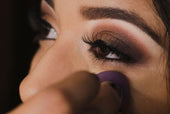
Enhance Your Eyes: A Guide to Eyeliner for Every Eye Shape with Liht Organics
Welcome to the Liht Organics blog, where we believe in celebrating the natural beauty of every eye shape. Today, we'r...
-
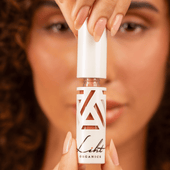
How to do makeup with only lipstick?
At Liht Organics, we believe in the power of clean beauty and the artistry of makeup. Makeup is more than just enhanc...
-

How to Clean Your Makeup Brushes in 6 Simple Steps
Cleaning your makeup brushes may seem like a tedious task, but it's an essential part of your beauty routine. Not onl...
-

Makeup Tips to Help You Look Your Most Flattering on Virtual Meetings!
After more than 2 years of work-from-home arrangement, and possibly hundreds of zoom calls and Google meet virtual me...
-

Learn How to Contour with This Simple Guide for Beginners
Want to take your makeup to the next level? Try contouring to achieve a more defined or sculpted look à la the Kardas...
-
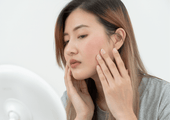
Essential and Easy Makeup Tips for Sensitive Skin
Living with sensitive skin conditions like eczema, psoriasis, and more is already not an easy feat. Throw in makeup t...
-

Raising Your Vibration: A Liht Organics Guide for Empowerment This International Women's Day
wp:paragraph As International Women's Day (IWD) approaches, it serves as a powerful reminder of the journey towards s...
-

The Beauty of Going Bare: Why Sleeping with Makeup is a No-No
Have you ever had one of those nights where you're too tired to clean off your makeup? You might believe, "Skipping...
-

Breast Cancer Awareness: Empower Your Beauty with Liht Organics Makeup
During October, we observe Breast Cancer Awareness Month as a way to unite and bring attention to breast cancer whil...
-

The Hidden Dangers of Carmine in Makeup Colorants: Embracing Healthier and Vegan Options
Makeup has become an integral part of our daily routines, allowing us to express our unique beauty. However, as we pr...
-

How can I ensure that my makeup products are organic and won't harm my skin?
When it comes to makeup, it’s important to be mindful of what you’re putting on your skin. With so many products on t...
-

[FEATURE] HONEYCOMBERS – BEST BEAUTY BUYS IN JULY
by Nicole NithiyahWhat’s hot in our beauty hit list: Honest thoughts and top beauty stories we’re swooning over. As w...
-

Liht Organics Introduces Exclusive Gift Sets: Enhance Your Beauty This Festive Season!
As the holiday season approaches and the year draws to a close, Liht Organics is thrilled to present two enchanting g...
-

Get Spooktacular with the Best Halloween Makeup Ideas using Liht Organics' All-Natural, Vegan, and Cruelty-Free Cosmetics!
With Halloween just around the corner, it’s time to let your creativity shine and transform yourself into a spooky,...
-

Celebrating World Animal Day with Liht Organics: Embracing Natural Cruelty-Free Makeup
wp:paragraph As we observe World Animal Day, the team at Liht Organics takes great pride in honoring our pledge to...
-

Reasons Why You Should Choose Cruelty-Free Cosmetics Instead!
With increasing exposés unveiling the ugly truth behind animal testing that goes on in the beauty industry, it is lit...
-

Celebrate Singles Day with Makeup That Empowers – 22% Off at LIHT Organics!
This Singles Day, treat yourself to beauty that goes beyond skin-deep. At LIHT Organics, we believe makeup is about s...
-

Preparing for the Cozy Beauty of Autumn: A Preview of Your Fall Look
As we bid farewell to the warm, sun-kissed days of summer, it’s never too early to start dreaming about the enchantin...
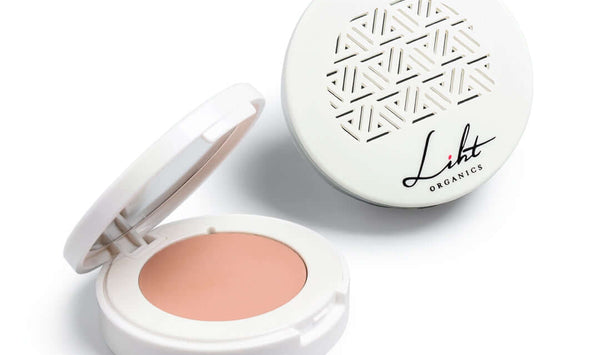
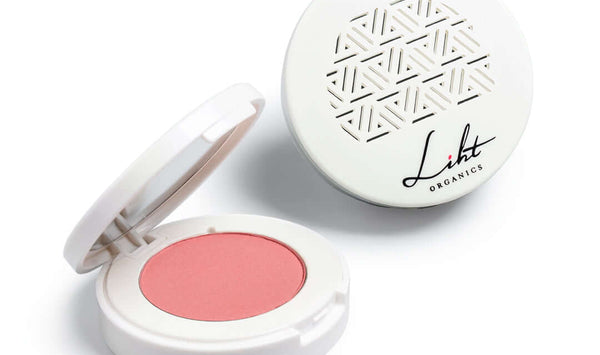
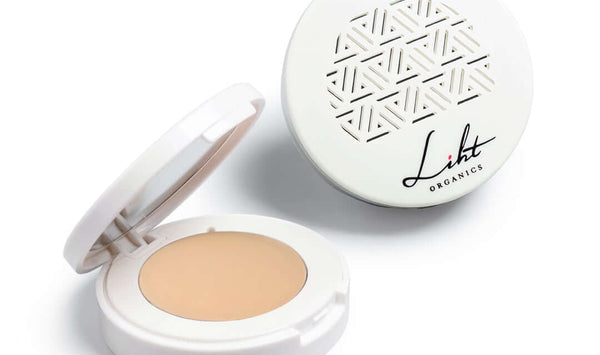
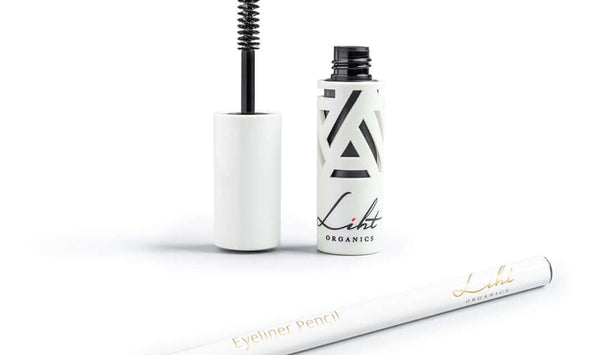
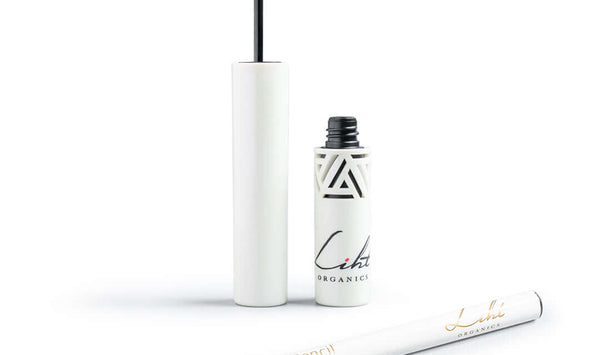
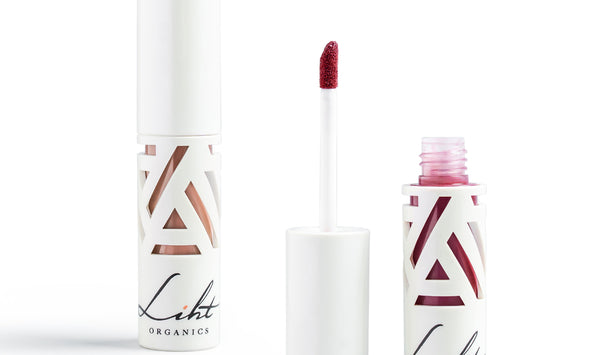
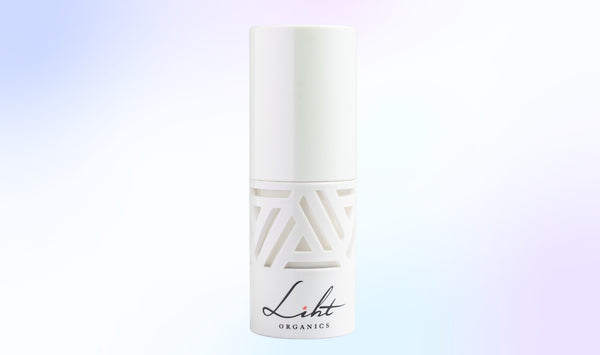

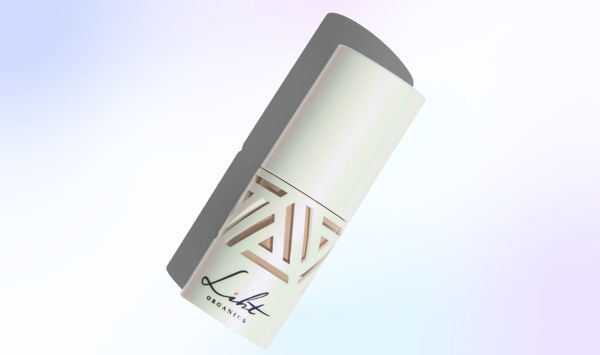
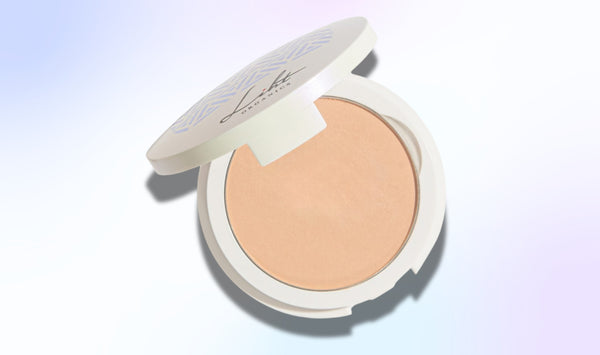
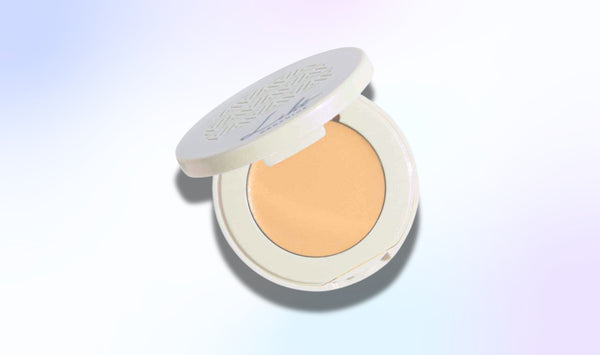
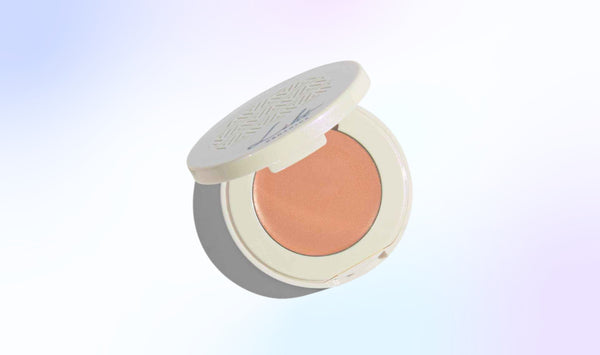
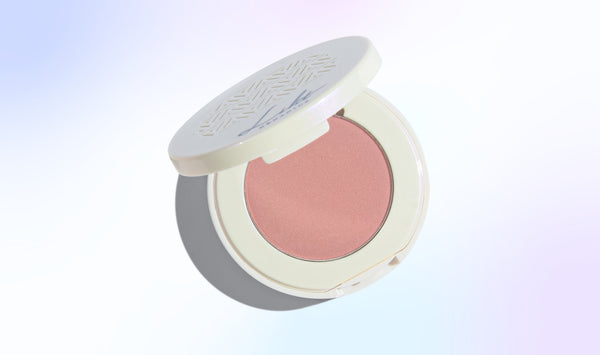
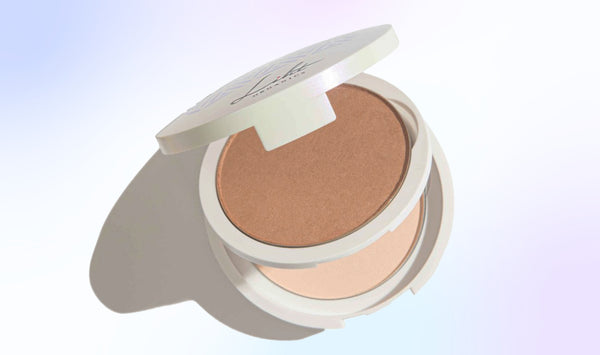
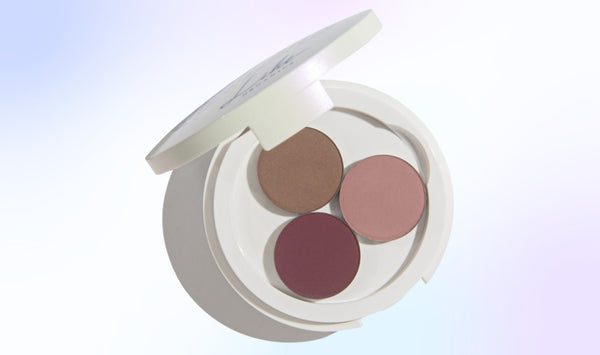
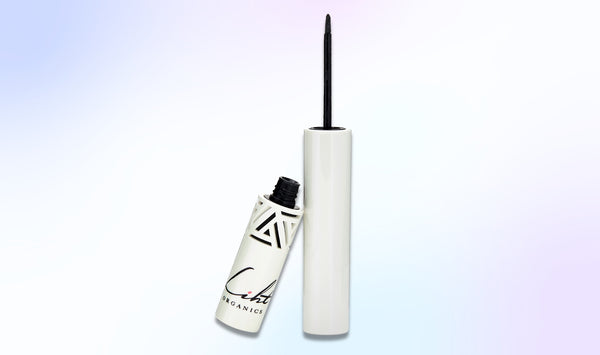
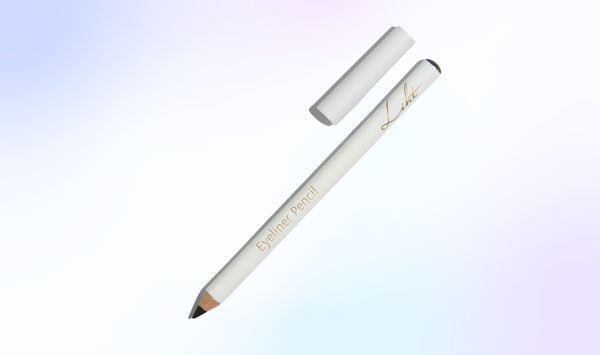
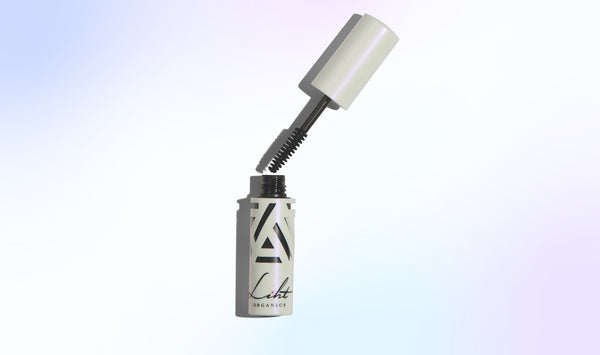
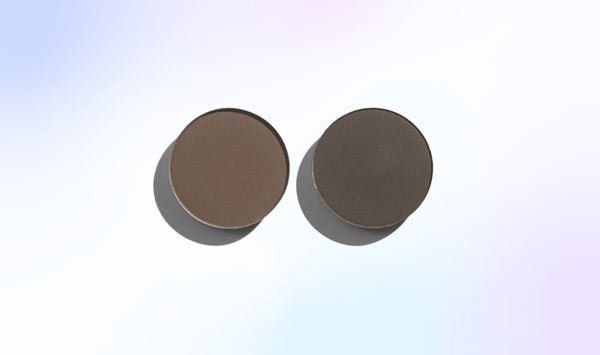
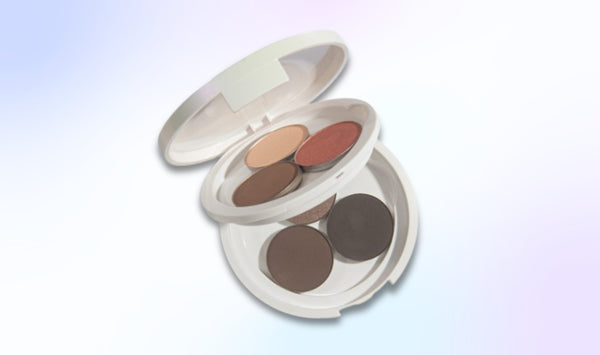
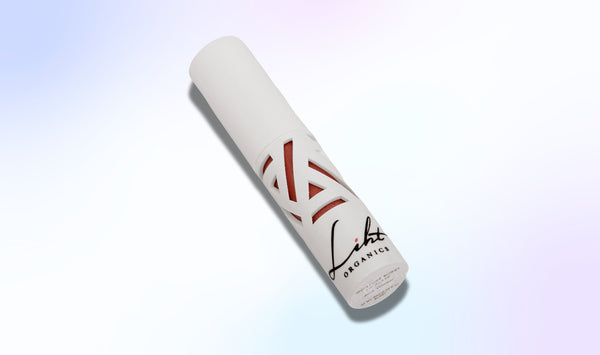
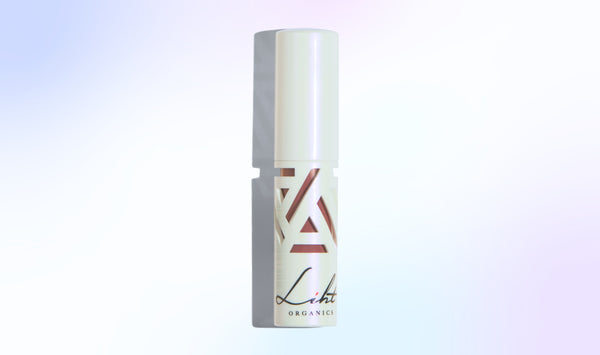
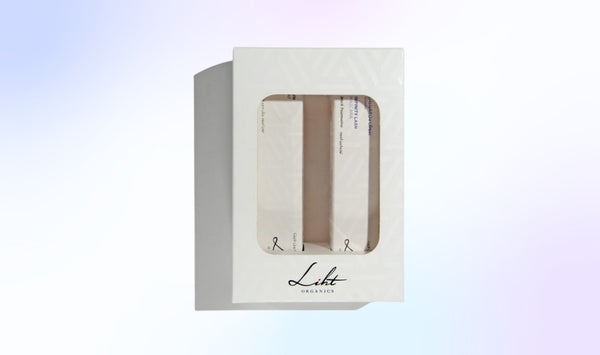
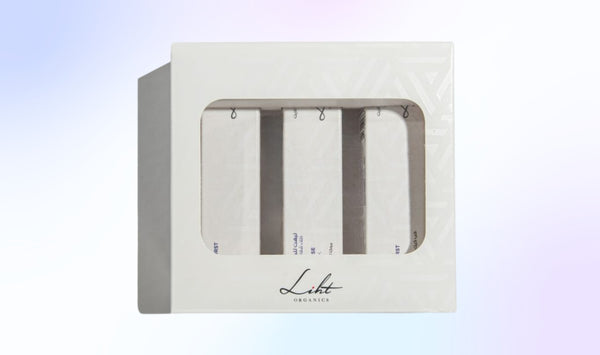


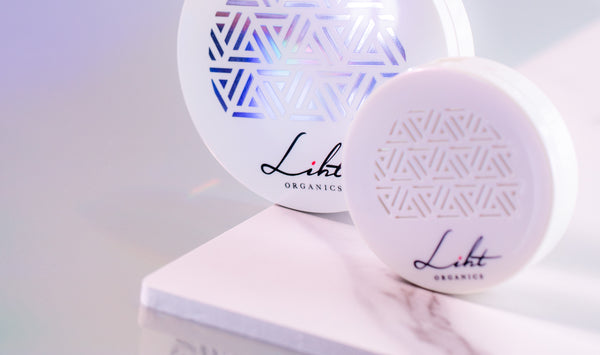
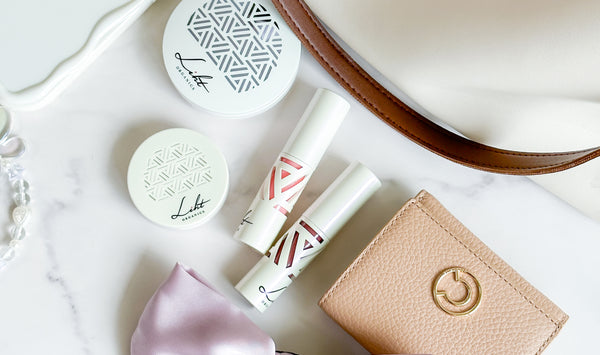
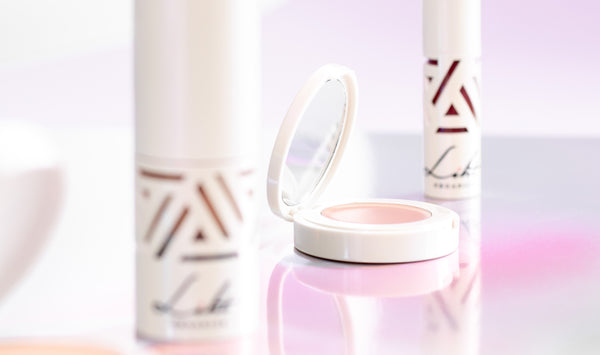




![[FEATURE] Liht Organics to debut at TFWA Asia Pacific show](http://lihtorganics.com/cdn/shop/articles/1_1.png?v=1759328400&width=170)
![[FEATURE] The Singapore-based organic makeup brand is a first-time exhibitor at this year’s TFWA Asia Pacific Exhibition in Singapore in May 2025](http://lihtorganics.com/cdn/shop/articles/2_1.png?v=1759328386&width=170)
![[FEATURE] Travel Retail Awards 2025 finalists - Best Make-up Product Color-Intense Liquid Lipstick – Liht Organics](http://lihtorganics.com/cdn/shop/articles/4_e2f54f0f-fcd1-46e7-9990-fc9d29e35131.png?v=1759328382&width=170)
![[FEATURE] Liht Organics targets expansion in travel retail](http://lihtorganics.com/cdn/shop/articles/3_1.png?v=1759328346&width=170)
































































